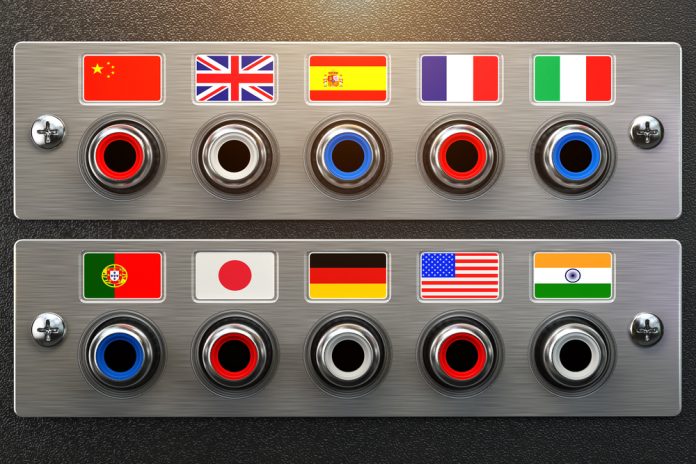In this article, you will find out how AI is changing the translation industry and the possibility of AI-powered speech translation.
Technologies are evolving at a breathtaking pace to make our lives more simple. It significantly changes the way we live, work, study and travel. Artificial Intelligence is one of the most demanding technologies that is implemented by many businesses and companies. At the same time, it actively penetrates the translation industry and has changed it drastically.
Some people believe that professional translation services are not needed anymore as Artificial Intelligence can do miracles and translate speech as well as humans do. But have we already met the future of translation or does this industry still need improvements? Let’s find out whether Artificial Intelligence is already capable of replacing human professionals.
Artificial Speech Translation
The first speech translation systems were created a long time ago and developers still keep working to improve it, make it better and as close as possible to human translation.
At Karlsruhe Institute of Technology, students are already able to listen to a foreign language speaker and follow the lecture in English right away through their electronic devices. Students will receive a text generated by AI on their laptops or cell phones that’s like subtitling. It’s important that a lecturer speaks loudly and clearly without background students’ chatter.
Artificial speech translation is possible nowadays but it has some flaws. For example, a device can recognize voice and speech, but only in a quiet environment such as a meeting room or a laboratory. If the speech is occurring with background noise, AI will have serious trouble identifying the voice and, respectively, translating it.
The Latest Invention of Google
Google has introduced to the public their outstanding interpreter mode for their home devices. Now, you can command Google to be an interpreter, and after this mode is activated you will get text translation after you speak.
Google’s latest invention is an AI-powered translator that includes the function of voice recognition and can help to deliver voice translation via a special mobile application. Artificial Intelligence can even translate and keep your voice. Experts working at Google have come up with unconventional solutions and have managed to train neutral machine networks to map voiceprints from a source language to a target language.
The results are not perfect yet but professionals are working on improvement. Still, Google’s smart translator coped with recreating voice and tone of the speaker. It became possible as the system converts audio input directly into output with no other intermediary steps required. The traditional translation system would convert an audio file into text, then translate this text and only then it would resynthesize the audio. In this case, the recreation of voice and tone of a speaker is impossible.
Speaking of text translation, Google has improved its quality with AI as well. Professionals have come up with a new method called Google Machine Neutral Translation that can reduce 80% of translation errors in comparison with their previous algorithms. Soon users will get quality translation that will be hard to distinguish from human translation.
This new method of Artificial Intelligence will cut up a sentence and will try to match words or phrases from this sentence to a dictionary. The same dictionary is used to train neural networks. The first neutral network attempts to understand the sentence meaning and the other one creates the text in the target language.
The Way AI Has Changed Translation
Here are the main reasons AI has changed translation:
- Translation is easier and faster.
- It has become accessible.
- AI breaks language barriers.
Almost all people have already encountered powerful AI-driven translation in their everyday lives. Microsoft also has recently launched an outstanding application that can not just perform quality translation of a text but also can translate speech, images and street signs as well. It’s worth noting that this tool can work offline, which is an extreme advantage for those people who travel abroad or go to international business meetings.
Facebook has integrated AI-powered translation as well. The algorithms take the overall context into consideration, which is extremely beneficial for making final translation results much more accurate. It’s become even possible to translate in real time through a special user input.
Whereas AI makes translation more effective and powerful, it still has its own limitations and cannot be compared to human translation. According to an experiment that set a translation tool against professional translators, 90% of neutral machine translated text was grammatically awkward. AI-powered translation can be perfect for use on the go. Any company, business or professional should opt for professional translation services.
Intelligent Future for Translation
AI translation has lots of room for improvement and many efforts are needed in order to make it accurate as a human translation. Professional human translators will work closely with developers in order to teach machines and take the quality to the next level. But for the moment, AI-powered translation cannot exist on its own and be used for professional purposes.
Summing Up
Technologies are evolving each day and affecting the way we work, study and live. The latest AI advancements have started altering the translation industry in particular. New technologies that make translation easier and faster without human assistance are appearing and AI helps to not just translate the written text, but now it’s also possible to translate speech. In just a few years, the translation industry can be drastically changed by technologies and Artificial Intelligence but better solutions are sure to come.
However, we all have to remember that human translation skills cannot be substituted with machines, especially when we want to get quality translation or interpreting services. Therefore, the demand for qualified human professionals will never decrease. If you want to expand internationally and take your business to the next level, working with a service can be beneficial. This technology can assist you in facilitating daily tasks, performing simple translation and interpreting; it is perfect for usage on the go.
Find a Home-Based Business to Start-Up >>> Hundreds of Business Listings.
















































